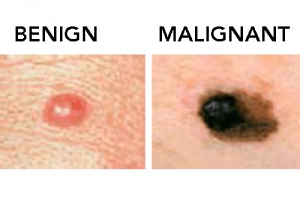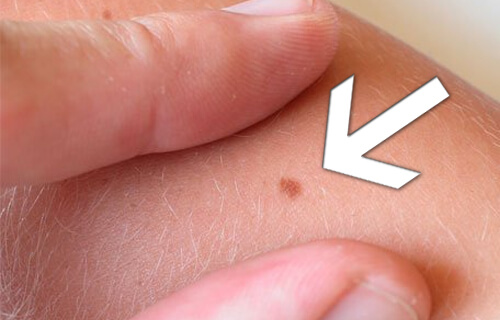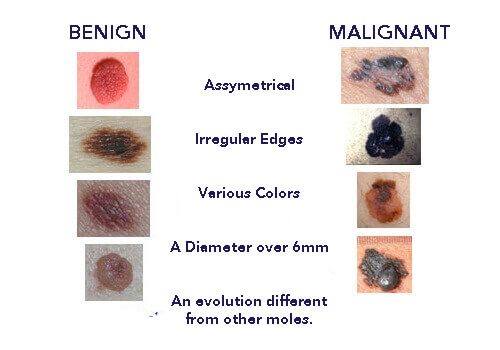Some Facts About Moles


Written and verified by the doctor Gilberto Adaulfo Sánchez Abreu
Moles are marks that appear on your skin. They’re very common and appear regularly. They’re also called birthmarks and can have different shapes. Their color can also vary and they can be brown or black. Also, they can often even have the same color as your skin. If you’d like to learn more facts about moles, keep reading.
Facts about moles
Most moles aren’t dangerous and there’s no need to remove them. Almost everyone has them, although some people have more than others. In this article, we’ll go over the basic facts about moles that you should know.
Discover: Skin Spots and What Causes Them
However, when a mole changes color, size, or shape, you should consider seeing a dermatologist. You should also go see one when a mole stops being inoffensive: when it burns, itches, hurts, or bleeds.
Dysplastic nevi or atypical moles are bigger than normal moles and can be over a centimeter in size. Its shape can change as well as its color, ranging from light brown to very dark with a pink background.

People who have a lot of atypical moles and also have relatives that have suffered from this type of mole (or melanoma) should be very careful because they have a higher possibility of suffering from skin cancer as it is hereditary.
People who have atypical moles should be very aware of changes that these can cause and even more so if they have family history of melanoma. They should also use a good sunscreen because the sun rays increase the risk of developing skin cancer.
How to know if your moles are abnormal

It’s very important that you learn how to identify abnormal moles so that you can examine your skin frequently and establish the difference between an inoffensive and normal mole and a mole that’s turning into an abnormal one that could end up being a cancerous mole. Keep the following in mind:
- A suspicious mole isn’t asymmetrical. In other words, its two halves are not equal to each other, it can vary in size, shape, color, and thickness, and it doesn’t look like it’s part of the same mole.
- Its edges are very irregular. They are indistinct and don’t have a defined shape.
- The mole can have various colors.
- The size of a melanoma can be between six millimeters in diameter or a little bit smaller. Its size varies.
Read more here: Signs of Skin Cancer You Shouldn’t Ignore
When you have any of these signs, it’s best to get specialized attention because if it advances it can turn into a truly complicated and dangerous health problem.
Remember that the most important thing is prevention. In the worst case scenario, if you already have melanoma, immediate attention is the best way to stop the disease on time. You shouldn’t give up for any reason.
We hoped you enjoyed these amazing facts about moles!
All cited sources were thoroughly reviewed by our team to ensure their quality, reliability, currency, and validity. The bibliography of this article was considered reliable and of academic or scientific accuracy.
- Silva, J. H., de Sá, B., Ávila, A. L. R. de, Landman, G., & Duprat Neto, J. P. (2011). Atypical mole syndrome and dysplastic nevi: identification of populations at risk for developing melanoma – review article. Clinics. https://doi.org/10.1590/S1807-59322011000300023
- Kitchener, S. (2007). Epidemiology of melanoma. In Color Atlas of Melanocytic Lesions of the Skin. https://doi.org/10.1007/978-3-540-35106-1_28
- Baigrie, D., & Tanner, L. S. (2018). Nevi, Dysplastic. StatPearls.
- Williams, M. L., & Sagebiel, R. W. (1994). Melanoma Risk Factors and Atypical Moles. West J Med. https://doi.org/10.1097/00006534-199509001-00062
- Schwartz, Rodrigo. (2011).Melanoma maligno y diagnóstico diferencial de lesiones pigmentadas en piel.https://www.sciencedirect.com/science/article/pii/S0716864011704850
This text is provided for informational purposes only and does not replace consultation with a professional. If in doubt, consult your specialist.








